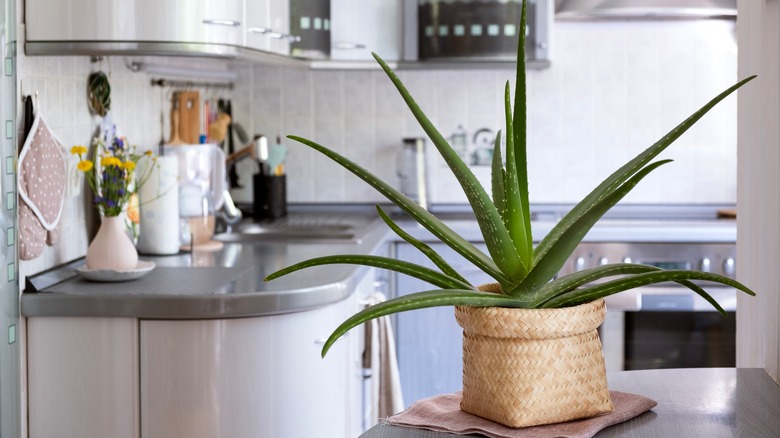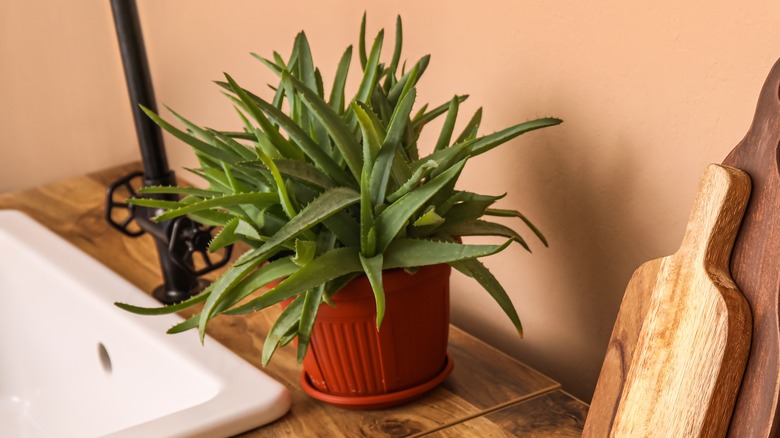Simple Ways To Water Your Aloe Vera For Lush Growth
If you're thinking of acquiring a lovely aloe vera plant, you'll need to know that it has specific watering needs. Aloe vera plants are one of the best succulents to grow indoors but they do need the soil to dry out in between watering because they don't tolerate wet soils. So, to ensure your aloe vera produces lots of lush growth, you need to monitor the soil regularly and only apply water when it's completely dry. Watering dry soil can be tricky because you want the soil to be moistened evenly to avoid any dry pockets. Find simple ways to water your aloe vera, such as drenching the soil from above or using the bottom watering method.
Getting your aloe vera to receive sufficient water at exactly the right time means you'll have a happy plant that always looks healthy. If you don't give your plant enough water, you'll end up with shriveled leaves that will eventually turn yellow. On the other hand (and this one is more likely) if your plant receives too much water or the roots are allowed to sit in water, it could develop root rot which could mean the demise of your treasured plant. Incorrect watering is one of the reasons why your succulent leaves might be turning yellow. But, there's no need to worry because giving your plant just the correct amount of water is not that difficult if you use these easy methods to water it.
Drenching the soil from above
This method, apart from being effortless, is especially useful for washing out any salts that might remain in the soil as a result of the fertilizers you've used to feed your plant. Before you water your aloe vera plant, poke your finger into the soil in the pot down about 1 inch to make sure the soil is dry. Alternatively, you could use a popsicle stick or chopstick to check the soil moisture. Take your plant to the sink and, using a small watering can with a long thin spout, apply a constant stream of water to the top of the soil in the pot. Turn the pot as you do this to ensure that all the soil gets moistened evenly. Continue to pour the water into the soil until it starts to come out of the drainage holes in the base of the pot.
Once this happens, sit the pot on the edge of the sink and leave it there for around half an hour or so to let any remaining excess water drain away. If the pot normally sits on a saucer in its permanent spot, check it an hour or so, and empty out any remaining water that may have drained into the saucer.
Using the bottom watering method
This method is even more hands-off, and uses capillary action to easily allow the soil to soak up the water from below These are compelling reasons why you should be bottom watering your houseplants. Fill your sink or bathtub with around 1 to 2 inches of water. Place the pot into the water and leave it there for around 10 to 15 minutes. During this time the soil will absorb the water — just make sure that your pot has a drainage hole at the bottom.
Check on your plant after the allotted time to see if the soil is now damp by poking your finger into it. If it still feels a little dry, add a bit more water and leave the plant there for another 20 minutes or so. This should be enough time to allow the soil to soak up the water.
Check your plant again to make sure the soil is damp and let the water out of the sink or bathtub. Once again, rest the plant on the edge of the sink or bath to allow any excess water to drain out. Just remember that this method won't flush the soil of salts so you should use the drenching method above periodically.


